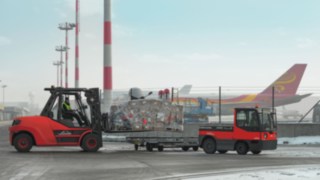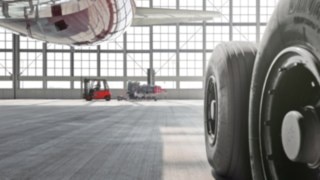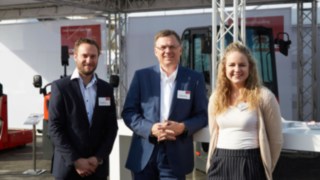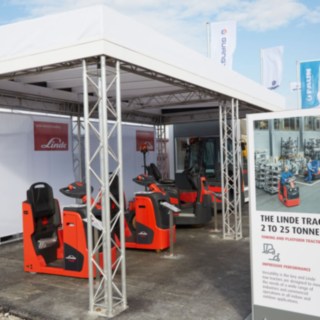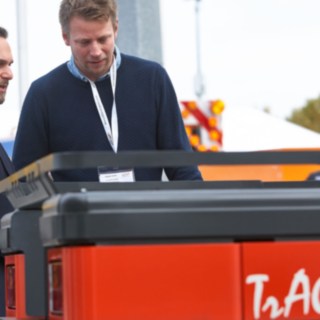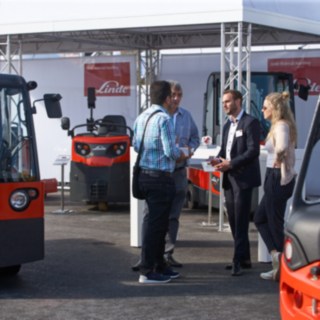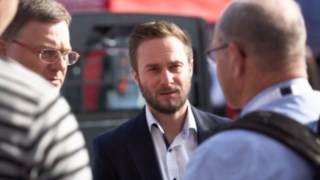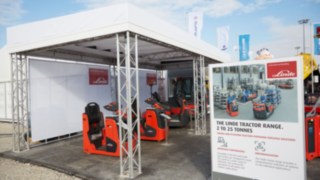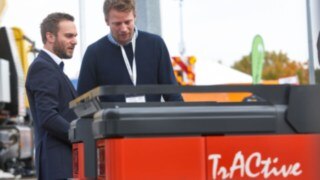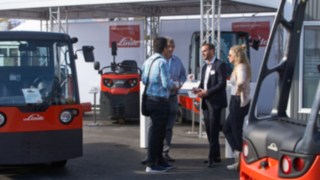Logistics solutions for ground handling
Fyling starts on the ground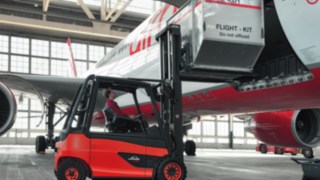
Aviation is booming.
Approximately 3.5 billion passengers travelled worldwide by airplane in 2016. Air freight is also a growth market. According to the International Civil Aviation Organization (ICAO), more than 50 million tons are transported by aircraft every year. That's almost 140,000 tons a day. According to the current World Air Cargo Forecast of Boeing, this volume is expected to double by 2035. But it is not the quantity of goods transported that makes air freight so special. Only one percent of all goods are transported by air. However, their value equals almost 40 percent of the total volume of goods transported worldwide. There are good reasons for this. Companies use air freight primarily for goods that have to reach customers quickly or are expensive and sensitive. Electronic components, high-quality machines and technical instruments, foodstuffs, clothing, but also exotic cargo such as ornamental fish travel the world by air. This places very special demands on logistics and in particular on the handling of goods.
Alexander Schmidt, Senior Product Manager for reach trucks and tractors at Linde Material Handling knows what these are:
Every flight begins on the ground. As soon as the aircraft is in the air, the most logistically demanding part of the work is usually done - until it has to be unloaded at the destination. As passengers, we mostly experience airports as smoothly functioning systems. Clean, warm, sometimes a bit hectic, but always under control. The reality on the ground and especially when handling goods is considerably harsher.
Extreme conditions
What makes logistics at an airport so special and what does that mean for the ground handling vehicles and warehouse equipment used there? The weather is an important factor, and air travelers are generally unaware of it. Whether rain, snow or extreme heat. Vehicles at the airport must function under all conditions. At the same time, they must also be able to withstand aggressive chemicals such as those used, for example, to de-ice aircraft at sub-zero temperatures. In addition, most logistics areas at the airport are not as flat as the tarmac. For underpasses or in multi-storey buildings, towing vehicles sometimes have to safely cope with extreme gradients under full load. In baggage handling or modern high-bay warehouses, solutions are called for that work reliably even when things get tight and hectic. Whether baggage handling or cargo terminals - because logistics areas are expensive, only minimal space is available for suitcases and containers. Airports are among the hardest places in terms of pollution levels that they can expect from industrial trucks and warehousing equipment," explains Schmidt. Accordingly, a manufacturer like Linde Material Handling has to design its vehicles with a correspondingly robust design. Due to the permanent strain, fast service is also required. A vehicle that stands does not earn any money," says Fabian Scherer, product manager in Schmidt's team. Our advantage is that we have around 8,500 specially trained service technicians worldwide. We can therefore support our customers around the clock and around the world.“
Ergonomics - Simple operation makes material handling safe and efficient
The special personnel situation at the airport places special demands on vehicle manufacturers.
The workforces of the logistics service providers and ground handling change very quickly. The companies employ many temporary workers. In contrast to companies with small fleets with a few permanently assigned operators, the people there do not identify themselves with their work equipment. It has to work, no matter who's driving.
And this must work internationally, because ground handling is a global business, emphasizes Schmidt.
Linde's industrial trucks are prepared for these requirements. The intralogistics specialist has a long tradition of ergonomic workplace design. The idea behind it: The simpler and more intuitive a vehicle can be operated, the faster the personnel can be trained and the less stress is placed on the operators. The advantages of this concept are obvious. Operators make fewer mistakes and do not tire so quickly. Accordingly, the number of accidents and freight damage decreases. The entire process becomes safer and more efficient. The safety requirements also play an important role in this context. The aviation industry is strictly regulated. In order to protect civil aviation from attacks, governments around the world have enacted regulations to this effect. Within this process chain, digital access controls such as Connect from Linde ensure that only authorised drivers can operate the devices. Another important aspect is environmental protection and thus drive technology. In order to reduce exhaust gases and emissions, more and more operators are relying on electric vehicles. "The trend towards switching from internal combustion engines to electric drives is also clearly noticeable," says Schmidt. "In Asia in particular, we expect that there will be guidelines from governments to increase the proportion of electric vehicles."
On the way to the digital airport
One of the most important future fields for airport logistics, as in other industries, is digitization. "Airports offer ideal conditions for further optimizing logistics processes, including complete automation," Alexander Schmidt points out. "We have many different vehicles from different manufacturers, large terrain, constantly changing routes and repetitive work. Our fleet management solutions are an important component in the overall system."
Users are clearly looking for potential for further automation. With the aid of a guidance system, the vehicles move over the airport grounds with millimetre precision. Luggage and cargo are handled fully automated. But - fortunately - it will not work without us humans. We will develop, operate and monitor these systems - and intervene whenever something goes wrong. When it comes to error handling, we're still better than the computer.
Impressions from the Inter Airport 2017
